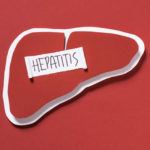Understanding Hepatitis B Serology
There is more than one test used to identify the Hepatitis B virus. In fact, there are quite a few, each with a slightly different implication. Often, attention to detail (like one small letter) differentiates one Hepatitis B test from another. To help clarify any confusion and reduce intimidation from the terminology, the most common tests appearing in a Hepatitis B blood panel are described in as simple terms as possible.
Hepatitis B virus tests check for substances in the blood that show an active or past Hepatitis B infection. More specifically, serology is a test that detects the presence of antibodies against certain organisms. Antibodies, also known as immunoglobulins, are typically formed in response to an infection so that the immune system can identify and destroy that particular bacteria or virus. Thus, Hepatitis B serology is the study of the presence of antibodies in the blood for the purpose of identifying and further understanding Hepatitis B infection.
When it comes to Hepatitis B, there are several different things to test for. Most Hepatitis B serology evaluates signs of infection via antibodies or antigens.
- Antibodies – As previously described, antibodies are proteins produced by the body to fight infection. The presence of Hepatitis B antibodies means that you have been exposed to this virus at some point in time.
- Antigens – Antigens are made by bacteria or viruses and they indicate that the virus is present in the body. Antigens cause the immune system to produce antibodies against it.
Because the name of each test is a mouthful, they are typically referred to by their acronym. However, those interested in Hepatitis B serology must pay close attention because the acronyms are extremely similar. The six serological markers for Hepatitis B include:
- Hepatitis B surface antigen – Shortened to HBsAg, the Hepatitis B surface antigen is a protein on the surface of the virus. HBsAg can be detected in high levels in the blood during acute or chronic Hepatitis B infection. The presence of HBsAg indicates that the person is infectious. HBsAg is the antigen used to make Hepatitis B vaccine. This is the first detectable marker of infection and is present as early as the incubation period.
- Hepatitis B surface antibody – Shortened to anti-HBs, the presence of Hepatitis B surface antibodies indicates the person has recovered from and has immunity to Hepatitis B. Anti-HBs also develops in a person who has been successfully vaccinated against Hepatitis B.
- Total Hepatitis B core antibody – Shortened to anti-HBc, this serological marker appears at the onset of symptoms in acute Hepatitis B and persists for life. The presence of anti-HBc indicates previous or ongoing infection with Hepatitis B in an undefined timeframe.
- IgM antibody to Hepatitis B core antigen – Shortened to IgM anti-HBc, testing positive for IgM antibody to Hepatitis B core antigen indicates a recent, acute infection with the virus.
- Hepatitis B envelope antigen – Shortened to HBeAg, Hepatitis B envelope antigen is found in the blood during acute and chronic Hepatitis B infection. A positive HBeAg test indicates that the virus is replicating and the infected person has high levels of the Hepatitis B virus.
- Hepatitis B envelope antibody – Shortened to HBeAb or anti-HBe, this substance is produced by the immune system temporarily during acute HBV infection or consistently during or after a burst in viral replication. A person who converts from positive HBeAg to HBeAB is more likely to achieve long-term clearance of the virus.
You can garner a lot of information about a person’s Hepatitis B from their serology. Different combinations of positive and negative results for these six serological markers have very different implications. Below is a description of some of the possible combinations and what they mean:
- Does not have Hepatitis B immunity – This describes someone who has not been infected, but is still at risk for possible future infection. These individuals have negative HBsAg, negative anti-HBc and negative anti-HBs; and they are encouraged to get the vaccine.
- Immunity from Hepatitis B infection –This person has surface antibodies present due to recovery from a prior Hepatitis B infection. These individuals have negative HBsAg, positive anti-HBc and positive anti-HBs.
- Immunity from Hepatitis B vaccine – This person has surface antibodies present due to the Hepatitis B vaccination. These individuals have negative HBsAg, negative anti-HBc and positive anti-HBs.
- Acute Hepatitis B infection – Someone with an acute Hepatitis B infection has positive HBsAg, positive anti-HBc, positive IgM anti-HBc and negative anti-HBs.
- Chronic Hepatitis B infection – An estimated10 percent of people with the virus develop chronic Hepatitis B. They have positive HBsAg, positive anti-HBc, negative IgM anti-HBc and negative anti-HBs.
Although the scenarios above do not include every possible combination of Hepatitis B serology results, they demonstrate how much information can be extracted from these serological markers. Through understanding the difference between antibodies and antigens and taking the time to interpret each letter in a Hepatitis B serology test, the seeming jumble of acronyms describing Hepatitis B tests lose their ability to confuse and intimidate.
References:
http://www.cdc.gov/hepatitis/HBV/HBVfaq.htm, Hepatitis B FAQs for Health Professionals, Retrieved April 10, 2011, US Centers for Disease Control and Prevention, 2011.
http://www.hepatitisbsymptoms.net/hepatitis-b-serology.html, Hepatitis B Serology, Retrieved April 810, 2011, Hepatitis B Symptoms, 2011.
http://www.hepb.org/patients/understanding_the_results.htm, Understanding the Results of Your Blood Tests, Retrieved April 10, 2011, Hepatitis B Foundation, 2011.
http://www.mayoclinic.com/health/hepatitis-b/DS00398/DSECTION=tests-and-diagnosis, Hepatitis B: Tests and Diagnosis, Retrieved April 10, 2011, Mayo Foundation for Medical Education and Research, 2011.
http://www.webmd.com/hepatitis/hepatitis-b-virus-test, Hepatitis B Virus Tests, Retrieved April 10, 2011, WebMD, LLC, 2011.








4 Comments
I have 40 old years ,woman .In 1996 I was identify with ATh HBS +.Today
in 2012 I am al the time sickness,and if I eat much I vomit . My analysis
TGO ,TGP ,GGT is normal under 50.I have to polichistic kydney with creatinine 3,6 level. My liver is cover with more chist and he is more increast. Viremia (virus B in blod ) is now 1909 UI/ML or 4,05log copii ADN /HVB/ml or 11200copii ADN /HVB/ml.
You recomand SHO-SAIKO-TO tratament ? Because policystic kidnei I
have to highblodpresion (I do tratament for this).
I wait any sugestion from us .Now the sicknes is the more ,disconfort .
Your sincerely,
Ioan
Simply beneficial informations..thanks.
Dear Dr.Rathin,
I have the virus B from 2005 and this moment the viremia is 16200UI/ml I have to start some procedure in the pats this viremia has been 1200
Best regards
Very good, I am a medical student from Canada and this was extremely useful.